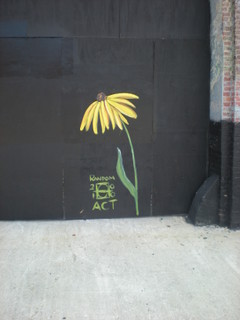This is the story of the health of our city, as seen from both a great distance and up-close and personal. We go about our days reacting to the forces around us, being shaped by them as we in turn influence the world, and understanding these interactions is vitally important to our understanding of ourselves and our place on this planet.
There is no shortage of evidence that we are living in a more interconnected world and that this has tangible impacts on the health of our community. Look no further than headlines from the past few weeks, with news of the expanding impact of West Nile disease on our most vulnerable neighbors, or changes in fuel prices resulting from decreased or reallocated grain harvests, to recognize that global health and environmental factors are critically important to our day-to-day lives. The choices we make regarding what we eat, whether or what we drive, how we treat one another, and the policies we put in place through elected officials feed back into this same global/local system.
The questions that this column will seek to answer fall into a number of connected categories. The highly integrated world we now find ourselves in has a great number of challenges that were simply not a matter for consideration 100 years ago. On the other hand, cultural sharing of art, literature, and (most deliciously) culinary traditions is now a relatively simple and user-friendly process. Food will play an ongoing role in this space, both the wonderfully tasty and the geo-politically nerve-wracking. Both in conjunction with and separate from future discussions of Baltimore’s role in a global society, we will look at issues related to a changing climate, from the economic effects on Baltimore’s harbor to my wife’s struggle with poison ivy and mosquitos. Finally, the environment will be a thread to tie our meandering journey together.
Our environment, including the traditional definition of nature outside, as well as the design of neighborhoods and the environment within our homes, can and does affect us physiologically and psychologically. Residents of a neighborhood without a grocery will struggle to eat healthy food, a house with inadequate natural light may exacerbate depression, and poorly timed stoplights will lead to accidents, gridlock, and road rage.
This space will examine the intersection of these separate but interwoven threads, and seek out solutions that have already begun in our own backyards.
Next time: Tainted steroids cause illness and death. What can we learn from this tragedy? In my next post we will review what is known and what can be learned from the outbreak of fungal meningitis spreading through the use of tainted drugs. Many thousands of patients across the country have been exposed, and Maryland has been one of the hardest hit with 15 cases and one death reported at this time. The lessons from the perspectives of public health, drug safety, and community impact will be included in our investigation.

